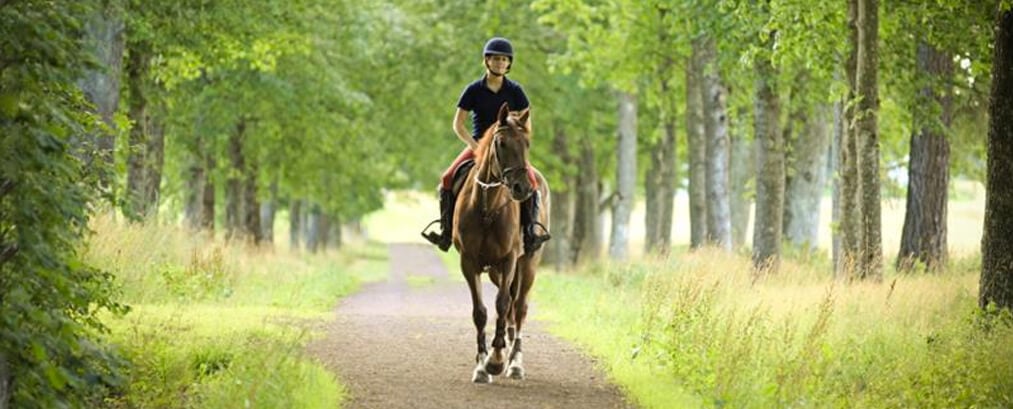Keeping a successfully-maintained barefoot horse is based on the four barefoot foundations
- Diet is key.
- Targeted exercise and movement encourages hoof growth and health
- A suitable environment is important
- A functional trim for a working barefoot horse is performed by a knowledgeable hoofcare professional
Here, we look at the importance of exercise and movement for the barefoot horse

Turnout - Barefoot enthusiasts agree that optimal turnout is desirable for the horse in order to provide non-ridden exercise. Ideally, horses should be kept out at pasture 24/7 with good shelter, water and forage available. But that’s not possible for everyone!
Whatever the duration, turnout for many barefoot equines is ideally arranged into a track system (or ‘paddock paradise’), which aims to encourage the horses and ponies to travel along paths, as horses do in the wild. The longer you can make the track, the better.
Tracks should vary in width, but be wide enough to allow the horses contained within the system space to safely pass each other (e.g. 10-12ft minimum). The track can be marked out with electric fencing, forming a corridor around the outside of a field, for example, or along a particular path or section of land. People have been known to create track systems in car parks - remember, these tracks aren’t there for grazing, but for movement!
If you can’t alter your horse’s livery turn out facility into tracks, you must make the most of what you have. Ideally in the horse’s field, it is desirable to have varying gradients and different surfaces, from areas of pea gravel and stones, to flooded, wet areas. Of course, many horses that are liveried may not have such facilities or opportunities. In this case, you could utilise other areas and surfaces at your yard - perhaps walking the horse in hand every day over different surfaces and terrains that could help to condition the hoof.
In terms of time, the most time turned out that you can secure at your facility is desirable. Horses that only have a few hours turned out, so they can move and graze, invariably do not have optimised feet.

Exercise - Your bare horse will grow the bare hoof that his management and riding regime allows. Working on roads is great for healthy hooves and stimulates them, resulting in more and better hoof growth. If you need to work a horse on surfaces which it is not yet comfortable on, then your hoofcare practitioner will recommend the use of hoof boots. It is never productive or fair to force a horse to work on surfaces he is not comfortable on without protection.
Let’s remember that the hoof is an organ. The sole of a healthy hoof is ideally concave. Some breeds are more pre-disposed to flatter feet, however their management regime can influence concavity and sole thickness. In a barefoot horse, the sole should be well-stimulated by exercise, as it is an important part of the weight bearing process. Various parts of the foot should also weight-bear, including the frog, heels, and water line, the light-coloured inner layer of hoof wall. (The bars, the parts of the hoof wall that turn inward beside the frog, may also weight bear, although some ‘schools of thought’ prefer to remove the bar.)
However, a thin sole that hasn’t been sufficiently stimulated, a very flat foot or a hoof compromised by metabolic or dietary challenges may be challenged by hard ground, and there’s a real risk of bruising.

Comfort pads - Foam Comfort Pads worn inside hoof boots can be very beneficial in circumstances when you need to work a horse on surfaces that he is not yet comfortable on. pads help to reduce concussion, boost circulation and ultimately hoof condition, and can help improve the integrity of the hoof’s digital cushion and the internal and external structures of the hoof. various thicknesses are available and 12mm density is the most popular pad, for everyday use.














